Select any of the options to view a description of the facility/instrument, and for who the primary contact for each is.
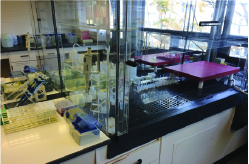
Contact: Dr. Daniel Layton-Matthews (dlayton@ queensu.ca)
A class 100 clean laboratory is available in the geology department for preparation of samples for measurement by the Element HR-ICP-MS, Neptune MC-ICP-MS and the iCAP 6500 ICP-OES. The low detection limits of the Element and precision of isotope ratio measurements using the Neptune demand ultra-clean conditions during sample preparation to avoid contamination. Facilities include column chromatography for element separations and purification.
Contact: Dr. Daniel Layton-Matthews (dlayton@ queensu.ca) and Dr. Matthew Leybourne (m.leybourne@ queensu.ca)
Thermo Scientific ELEMENT XR HR-ICP-MS
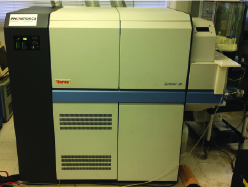
The Thermo Scientific ELEMENT XR can resolve mass differences of 0.0001, which enables the analysis of elements such as: Li, B, K, Cl, Fe, As, Se, Au and others. Through the combination of a single Faraday collector with the SEM, the linear dynamic range of the Thermo Scientific ELEMENT XR has increased our dynamic range by three orders of magnitude, when compared to our ELEMENT. This instrument can be coupled with one of our two ESI-NWR Eximer 193nm ArF lasers for solid sampling or with our hydride generator for greater sensitivity of poorly ionized elements, such as Se, As, or Hg.
ThermoFinnigan Neptune MC-ICP-MS
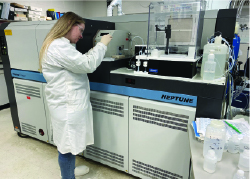
The Thermo Finnigan NEPTUNE high resolution MC-ICP-MS (multi-collector ICP-MS) is ideally suited for measurement of isotope ratios. The Neptune has high resolution capabilities so that interferences can be separated from analyte signals to ensure interference-free ratios. Samples can be measured as solutions or solids by laser ablation. Currently measured elements include: Sr, Pb, Sm, Nd, Hf, Cu, Zn, Li, B, Ca, Mg, Fe, Cr, U, Mo, Os and Re. U-Pb dating of zircon and other U-containing minerals is performed regularly.
 Thermo Scientific iCAPTM TQ ICP-MS
Thermo Scientific iCAPTM TQ ICP-MS
The iCAPTM TQs triple quadrupole inductively coupled plasma mass spectrometry (TQ ICP-MS) is a high-performance ICP-MS system with detection limits down to the single ppt (ng.mL-1) level. The TQ can operate in multiple modes (6 modes available) to resolve isobaric interferences (i.e. ArO on Fe, ArCl on As), thanks to its collision (kinetic energy discrimination )/reaction cell (mass shifting), and various speciality gas attachments (H2, He, O2 and and NH3). The PrepFast M5 autosampler with its automatic dilution feature enables reproducible and reliable dilution of samples and calibrations (up to 200x), as well as intelligent dilution, to ensure that all measured analytes remain within range of the calibration.
Thermo Scientific iCAPTM PRO ICP-OES
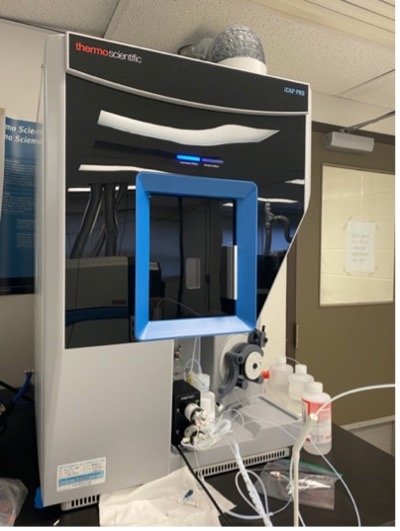 The Thermo ScientificTM iCAPTM PRO inductively coupled plasma optical emission spectrometer (ICP-OES) is a compact bench-top ICP instrument that combines stable performance and economical operation. The duo design allows for radial and axial capabilities and has many additional features that provide benefits in terms of application flexibility and analytical productivity, such as with high matrix samples (i.e. high salinity solutions) or analyses of samples covering a wide range of concentrations, from ppb (ng.mL-1) up to several thousands of ppm (µg.mL-1). The high efficiency optical design enables simultaneous analysis of elements with detection limits at less than 1 ppb, spanning wavelengths from 167 to 852 nm. This instrument also features the PrepFast M5 auto-dilutor, offering similar features than our TQ-ICP-MS.
The Thermo ScientificTM iCAPTM PRO inductively coupled plasma optical emission spectrometer (ICP-OES) is a compact bench-top ICP instrument that combines stable performance and economical operation. The duo design allows for radial and axial capabilities and has many additional features that provide benefits in terms of application flexibility and analytical productivity, such as with high matrix samples (i.e. high salinity solutions) or analyses of samples covering a wide range of concentrations, from ppb (ng.mL-1) up to several thousands of ppm (µg.mL-1). The high efficiency optical design enables simultaneous analysis of elements with detection limits at less than 1 ppb, spanning wavelengths from 167 to 852 nm. This instrument also features the PrepFast M5 auto-dilutor, offering similar features than our TQ-ICP-MS.XSERIES 2
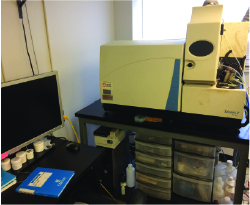
The XSeries 2 ICP-MS is one of the most productive quadrupole ICP-MS available for routine and high performance analytical work. The use of Peltier cooling and a third generation Collision Cell provides the highest signal / background of any quadrupole ICP-MS with collision cell capability. The XSeries 2 is also the only ICP-MS that seamlessly controls our 193nm ArF lasers for solid sampling providing automated data acquisition and real-time data reduction.
Contact: Dr. Matthew Leybourne (m.leybourne@ queensu.ca)
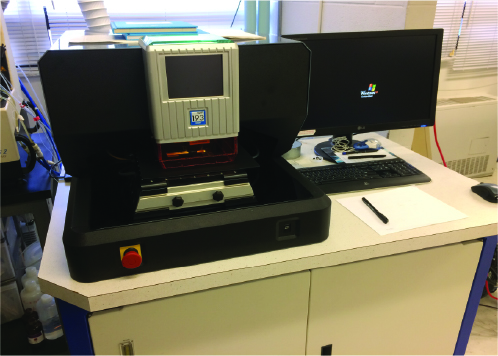
Contact: Brian Joy
JEOL JXA-8230 Electron Microprobe Lab
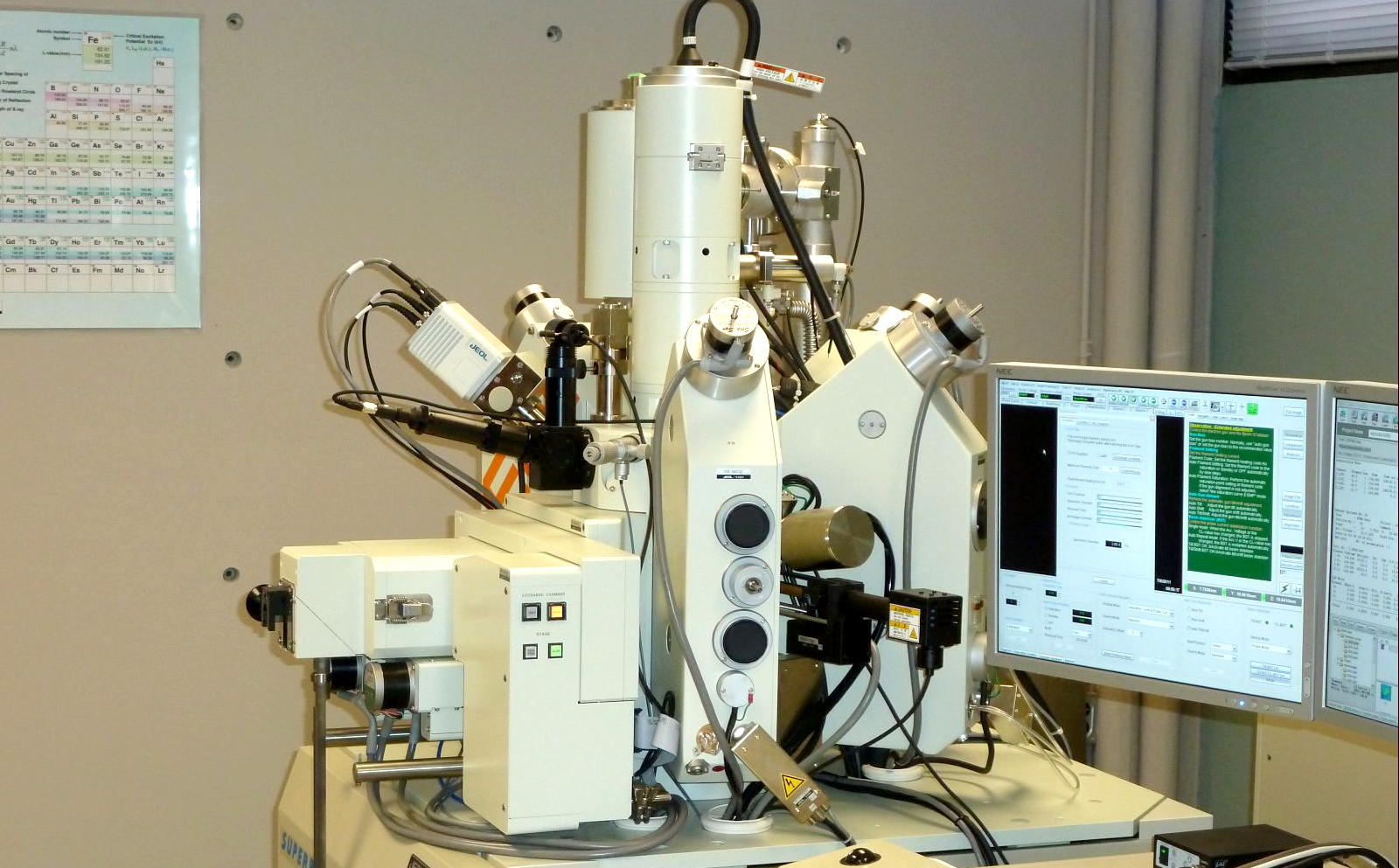
The department's JEOL JXA-8230 electron microprobe was installed in 2011 and is available for general use; the instrument is located in Bruce Wing, Rm 122. Clients from academia and industry are welcomed. Services offered include quantitative and qualitative chemical analysis, backscattered and secondary electron imaging, and X-ray mapping. The instrument is equipped with five two-crystal wavelength dispersive spectrometers and one energy dispersive spectrometer (SDD). Among the five WD spectrometers, one contains large-area LiF and PET diffracting crystals, and one contains “high-intensity” LiF and PET crystals. Two spectrometers contain TAP crystals and LDE “pseudocrystals,” the latter for detection of elements of atomic numbers five through nine.
Contact: Agatha Dobosz (agatha.dobosz@ queensu.ca)
FEI-MLA Quanta 650 FEG-ESEM
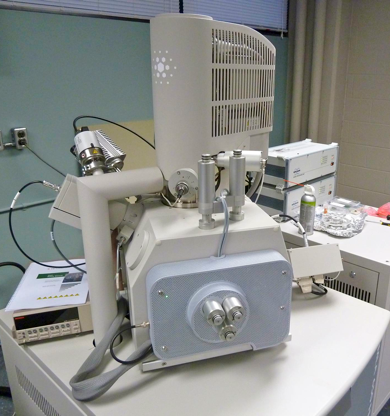
Our MLA 650 FEG ESEM is a high throughput field emission gun environmental scanning electron microscope. With its backscattered electron imaging capabilities and fast X-ray analysis, the MLA 650 FEG ESEM can be used to characterize geological and biological samples under low to high vacuum. The flexibility of the MLA 650 FEG ESEM is applicable to a wide variety of users.
The MLA 650 FEG ESEM has large specimen chamber, multiple high-speed energy dispersive X-ray spectrometers (EDS) and state of the art automated quantitative mineralogy software. Image and composition information can be acquired overnight from up to 16 samples without the need of operator assistance. The MLA software can identify minerals in polished sections of drill core, particulate or loose materials, and quantify a wide range of mineral characteristics, such as mineral abundance, grain size, and association - essential properties of samples. The MLA standards management system accommodates manual or automated standards collection, which makes the classification of spectra from new samples more efficient and reliable. This advanced standardization procedure is then used to classify spectra collected during the measurement.
Contact: Dr. Christopher Spencer (c.spencer@ queensu.ca)
SelFrag Lab
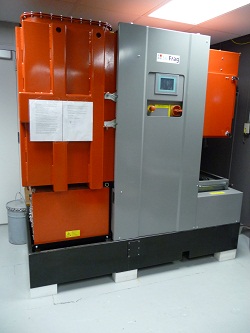
The SelFrag is used to selectively fragment drill core samples into monominerallic components using high voltage electrical discharges of up to 200 kV. Currently, QFIR is one of only a handful of labs in World with this technology. Selective fragmentation has many advantages over traditional mechanical separation of minerals from whole rock samples, as it can liberate minerals with a high degree of selectivity, produce mineral fragments with clean surfaces, preserve the natural grain size distribution of the sample, and the process does not produce toxic dust.
Contact: Evelyne Leduc (e.leduc@ queensu.ca)
DELTAplusXP Stable Isotope Ratio Mass Spectrometer
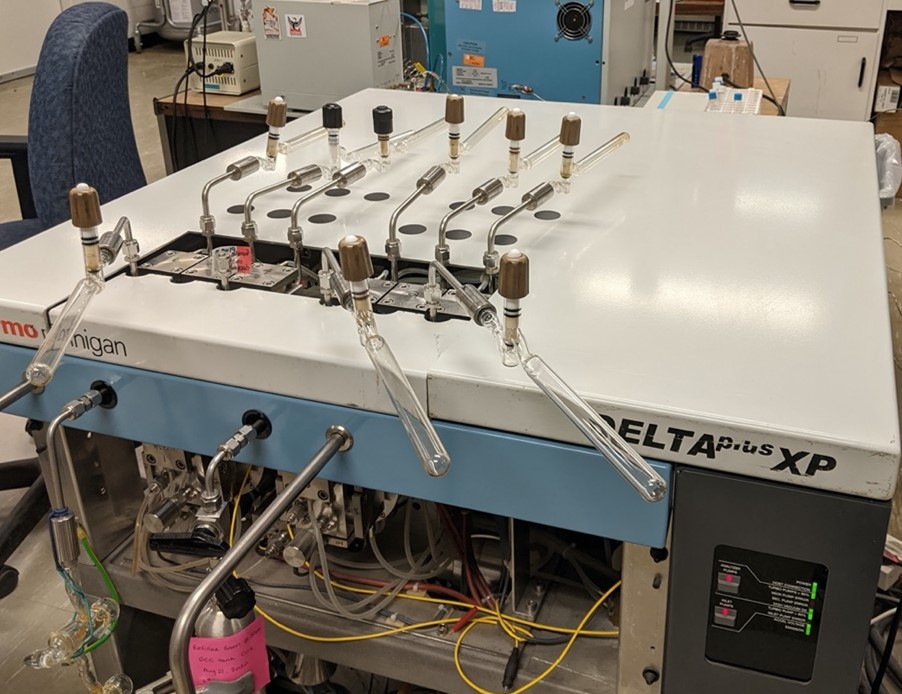
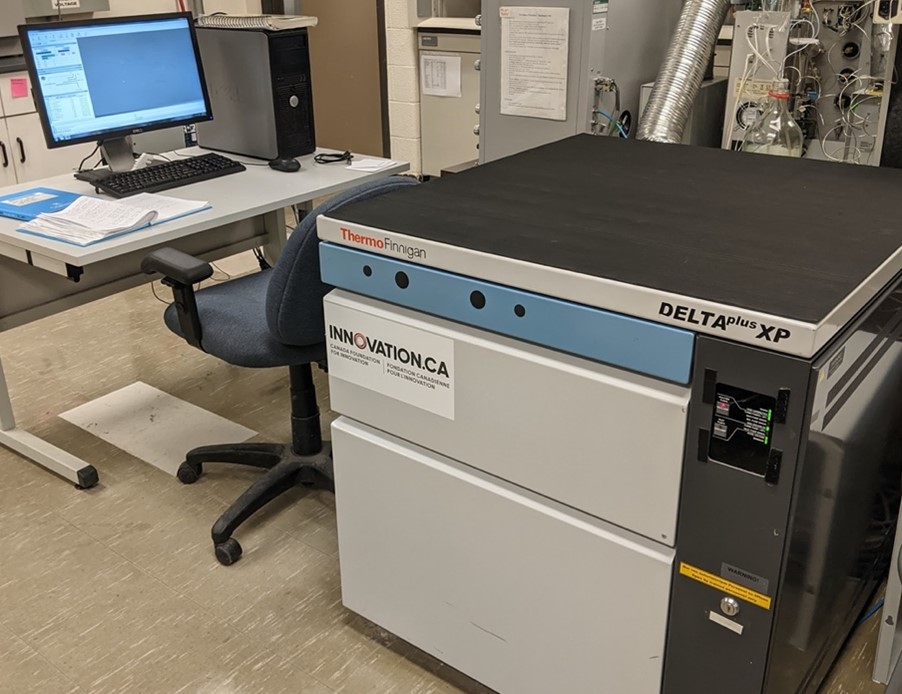
This generation of IRMS technology is a universal tool for 13C/12C, and 15N/14N, 18O/16O, 34S/32S, D/H determination in both dual inlet and continuous flow modes. A wide range of detector configurations allows for the development of novel techniques. The DELTAplusXP is a stable isotope ratio mass spectrometer for both routine and research applications. Two of these available, one of which is dedicated for the measurement of ratios in organic carbon and nitrogen. The second instrument is primarily used to characterize carbonates, waters and oxygen extracted from silicates.
GasBench II, EA, TC/EA and HDevice
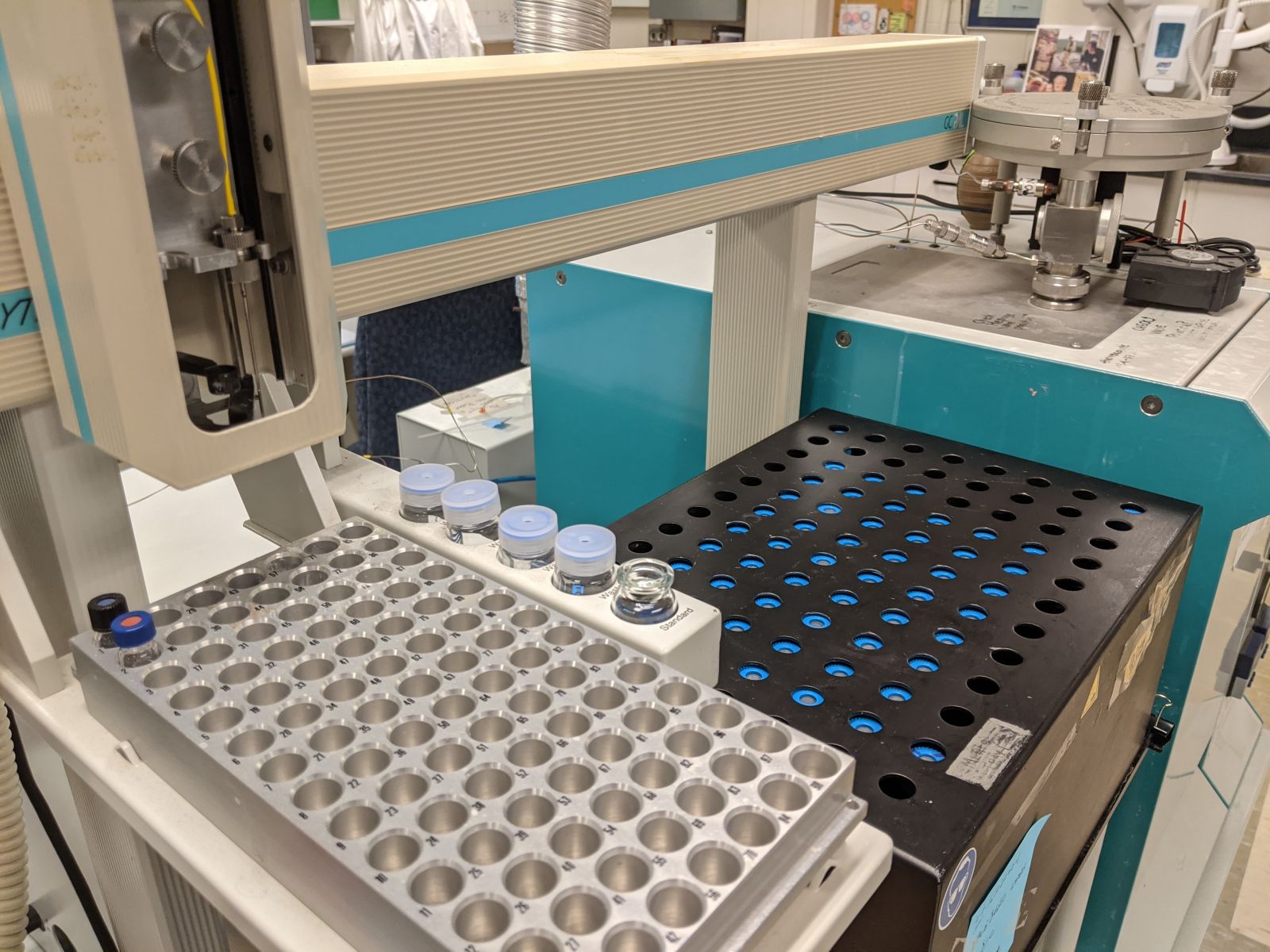
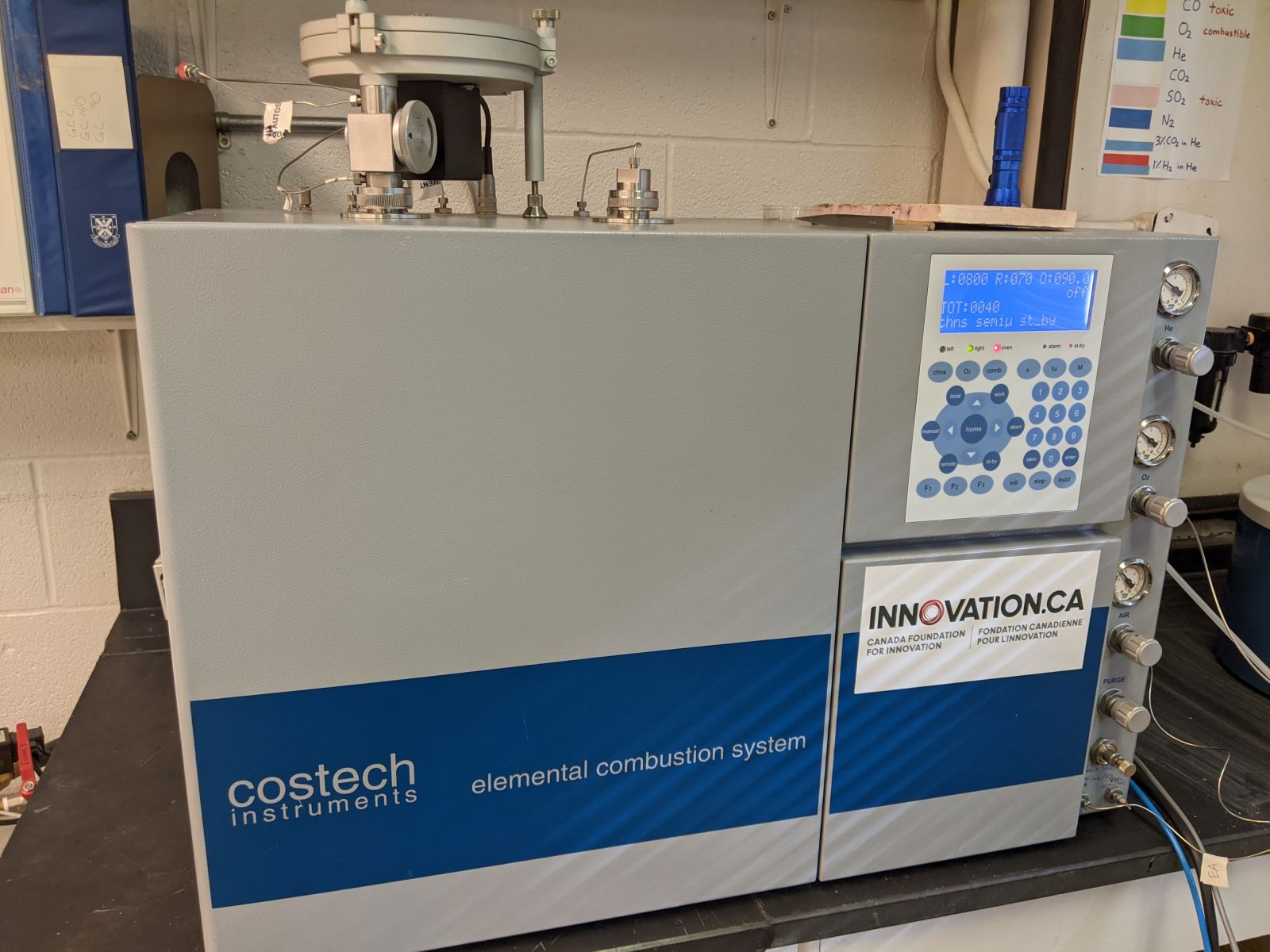
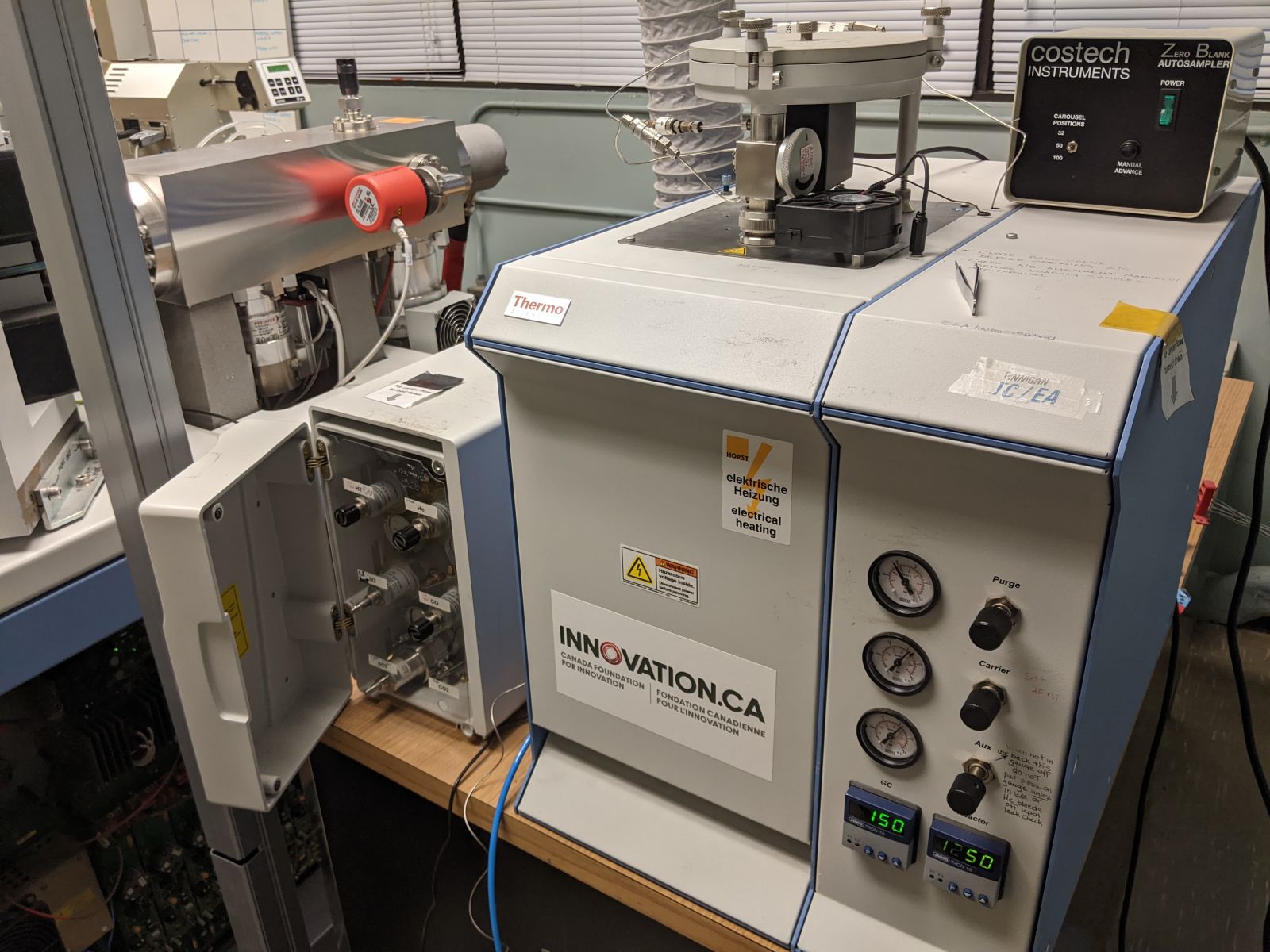
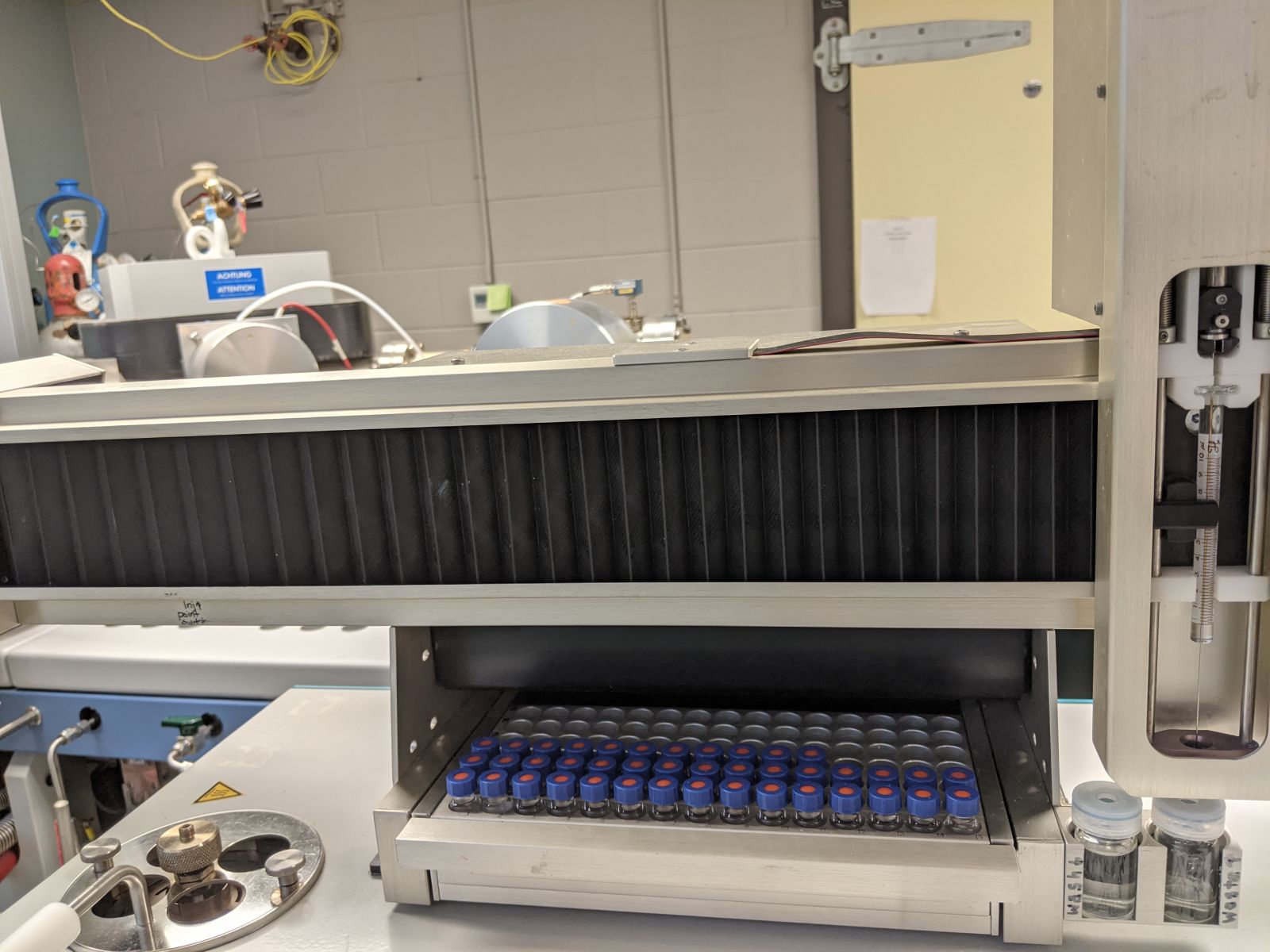
Universal on-line gas preparation and introduction systems for IRMS, these peripherals are an innovative tool for generating high precision on-line isotope ratio determination of gas species generated from minerals, waters, carbonates and organic samples. Two GasBench IIs combine dual inlet precision and accuracy with the high throughput of continuous flow technology. The various applications include, but are not limited to, water equilibration with CO2 18O/16O, carbonate 13C/12C and 18O/16O, dissolved inorganic carbon (DIC) 13C/12C, determination of 13C/12C of CO2 and 15N/14N in air. Two TC/EA high temperature conversion allow for direct continuous flow determination of 18O/16O and D/H enhancing the capabilities of the two existing QFIR conventional EA (elemental analysers) which currently permit online isotope ratio analysis of organic bulk samples for 13C/12C, 15N/14N and 34S/32S. Our HDevice is used to determine the D/H ratio for water samples (brines and fresh waters). A column containing Cr powder is heated to 850°C in order to reduce water (H2O) to hydrogen gas (H2). The HDevice can be coupled to the dual inlet on any of the IRMS in the stable isotope lab, and is designed to analyze very small volumes of sample (< 10mL).
Thermo Scientific MAT 253 Stable Isotope Ratio Mass Spectrometer
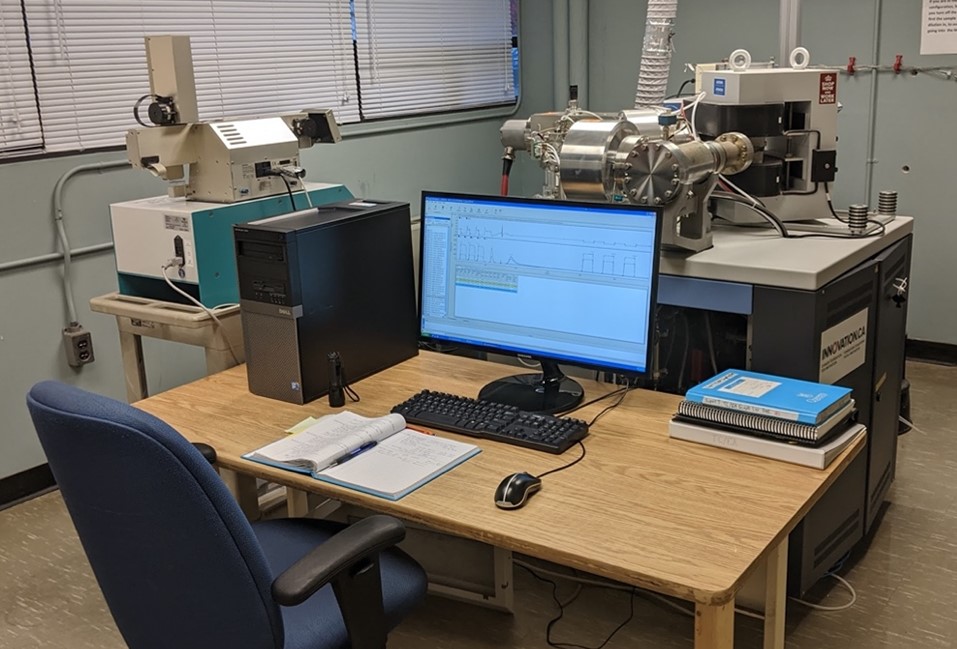
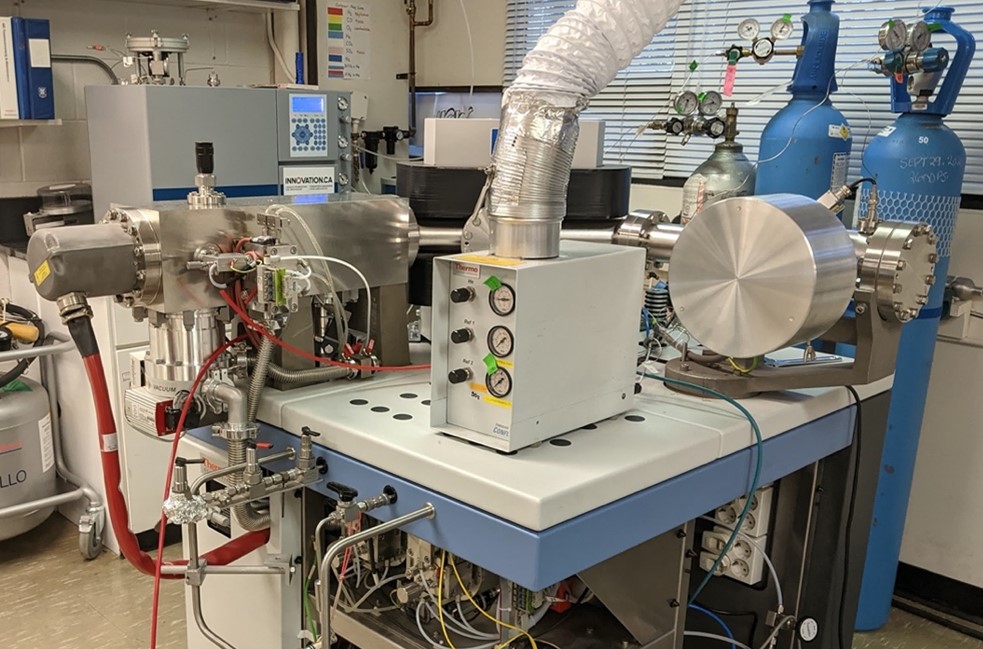
This latest generation of IRMS technology improves on the Delta series, providing tenfold increased sensitivity and a wider range of applications for the determination of D/H, 13C/12C, 15N/14N, 18O/16O, and 34S/32S (from SO2 and SF6). It is unique in its capability to achieve precision measurements from the smallest amounts of sample. Our MAT 253s provide a flexible and open platform for the connection of inlet systems and preparation devices, making them ideal tools for both routine and research applications. Our 8-cup configuration is currently dedicated to hydrogen, carbon, and oxygen measurements, with interfaced GasBench, HDevice, TC/EA and multiport capabilities for the characterization of silicates, carbonates, waters, mineral separates, whole rock and organic samples. The 10-cup-configurated instrument currently exclusively measures sulfur isotope ratios through EA combustion; an SF6 extraction line for triple sulfur is being deployed and is expected to expand our measurement capabilities on that instrument in the coming months.
Silicate Extraction Line
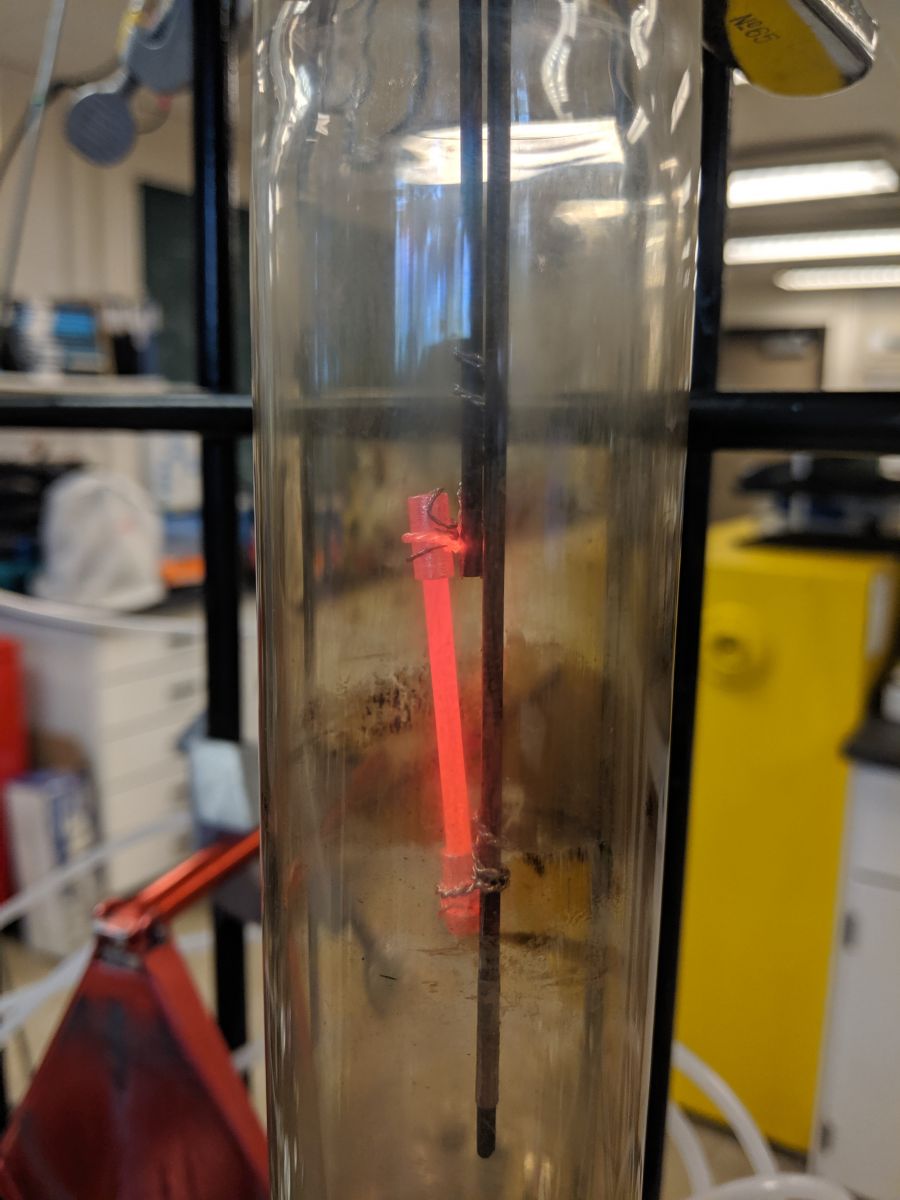
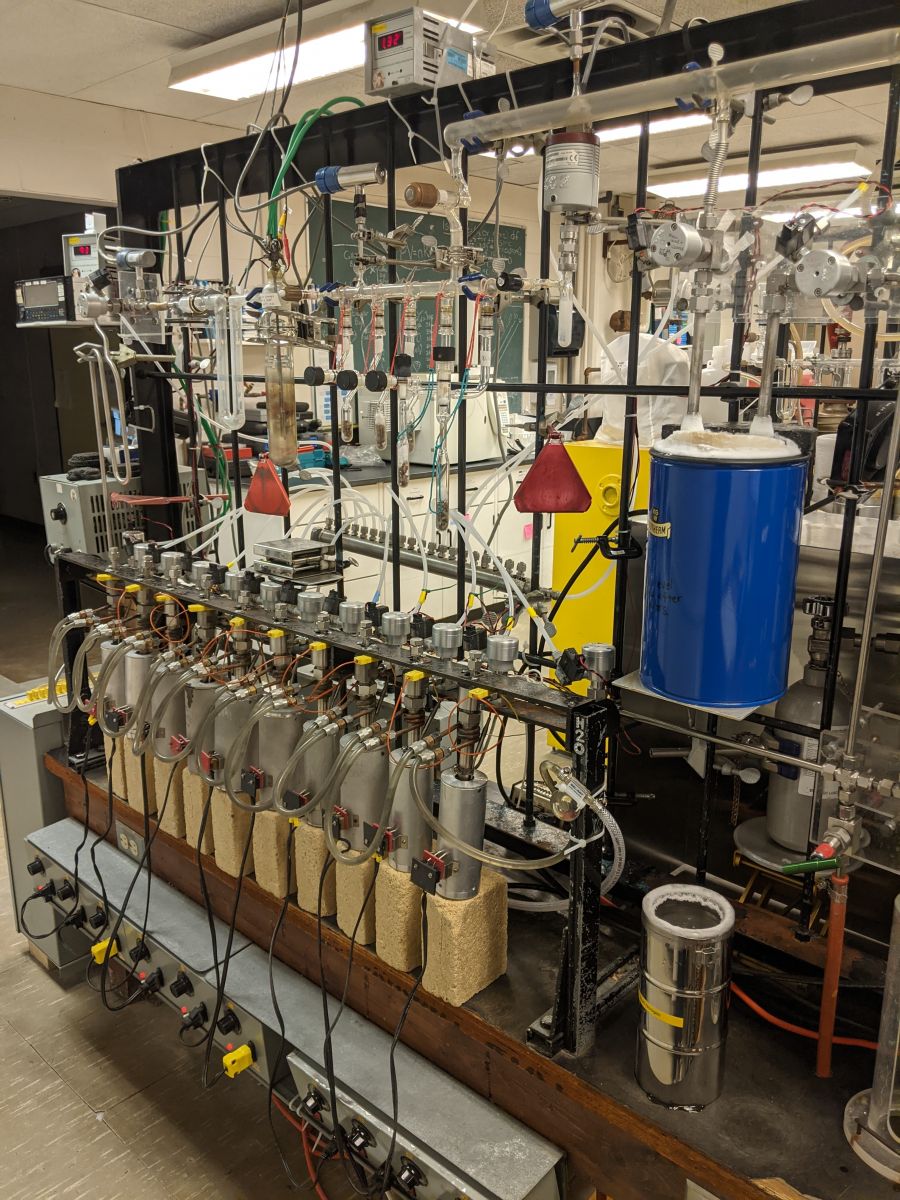
Oxygen isotope analyses of silicate and oxide minerals, and of whole rock samples are conducted using the BrF5 extraction method. Approximately 5 mg of finely ground sample are loaded into Ni reaction tubes and reacted with BrF5 at 575°C overnight. The extracted oxygen is converted to CO2 in contact with a heated graphite rod and the CO2 is then analysed off-line using a Finnigan MAT 252.
Contact: Dr. Christopher Spencer (c.spencer@ queensu.ca)
Thin Section Lab
The thin section lab is available to prepare standard and polished thin sections and mounts of most rocks and minerals, and loose grains such as tailings or aggregate for both Queen’s University and external clients. The lab features a Struers Accutom-100 cut-off/grinding machine and a LaboPol-30 lap. Additional rock preparation facilities include a variety of 12” laps, water-cooled rock saws, a Retsch vibratory sieve shaker and ring mill, a variety of brass and stainless steel sieves, riffle splitters, jaw crushers, and a rotary disc mill. Click here for a price list of our services. Please click here to download order forms.
Contact: Dr. Daniel Layton-Matthews (dlayton@ queensu.ca)
Anton Paar Mulitwave 3000
The Anton Paar Mulitwave 3000 is a microwave digestion system used to assist in sample digestion during sample preparation. It contains a rotor with a maximum of 16 positions, which typically includes 14 samples, 1 procedure blank, and 1 reference material loaded at a time. There is a variety of sample digestion methods in the software that includes various acids such as hydrochloric acid (HCl), hydrofluoric acid (HF), nitric acid (HNO3), and hydrogen peroxide (H2O2). The type of acid mixture used will depend on the sample matrix. For example, the shale digestion method consists of 4 mL of concentrated HNO3, 1 mL of concentrated HF, 1 mL of concentrated HCl, and 2 mL of H2O2. This microwave digestion method is performed at 1400 W power for a 30 minute period. An additional 5 minutes is added for ramp and 15 minutes for cooling at a temperature of 210°C (measured by infrared).
Malvern Panalytical Empyrean Multipurpose Diffractometer
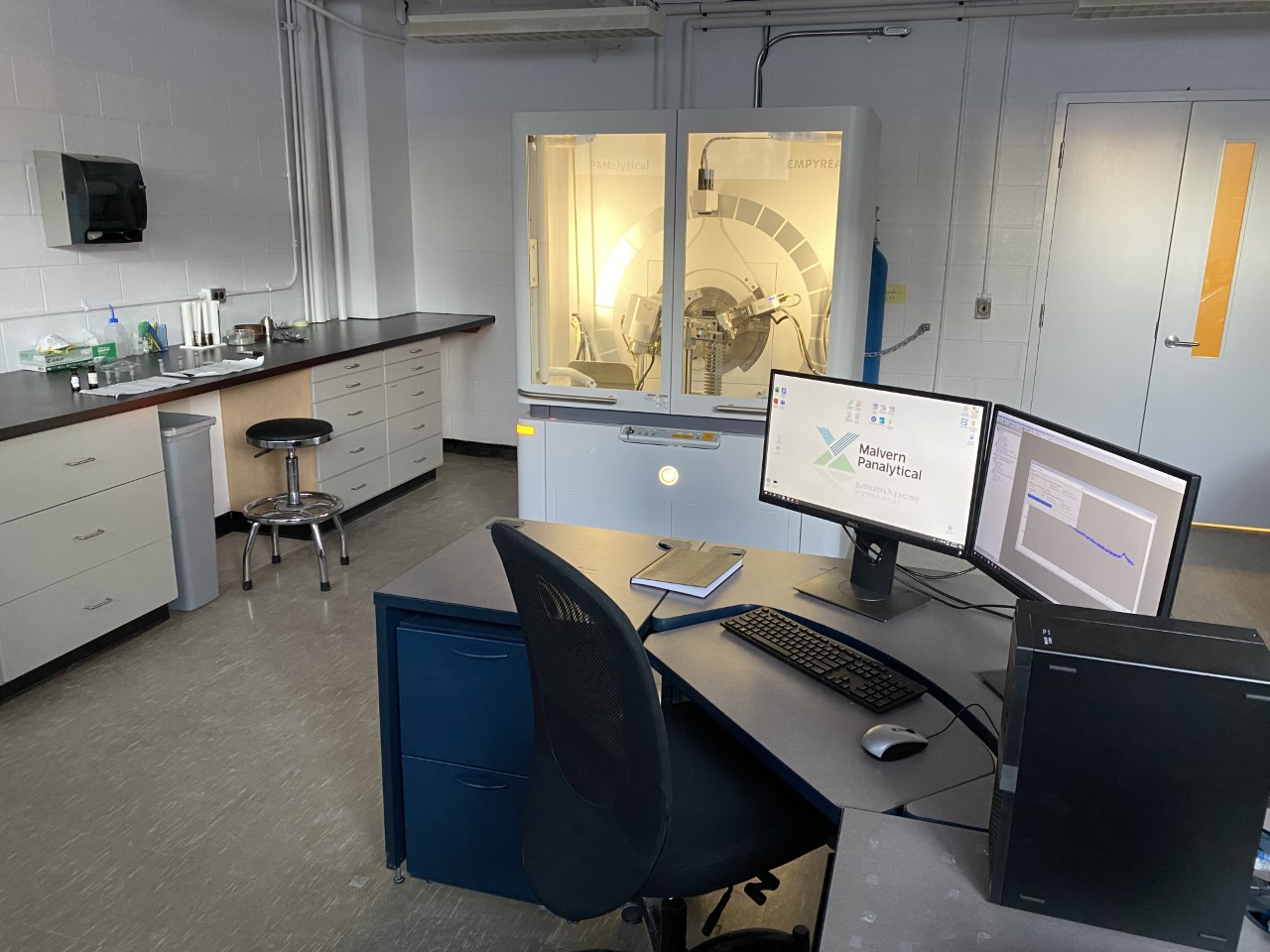 The Empyrean is the newest generation in highly capable multipurpose diffractometers, allowing for a wide variety of sample types and experimental set ups. Installed in 2020, this instrument is available for both academic and industrial use. Standard powder x-ray diffraction is ideal for rapid and accurate sample identification and Rietveld analysis of most crystalline powdered materials. The instrument is equipped with programmable slits and a PIXcel3D area detector, allowing for a wide variety of sample thicknesses and types beyond typical bulk analysis. Additionally, we welcome novel experimentation on non-powder samples, such as in-situ microdiffraction analysis of thin sections on a programmable x-y-z stage. Data processing is conducted on the most up-to-date Highscore installation with the most recent ICDD PDF-4+ database. This allows for Rietveld analysis of complex, multi-phase systems as are commonly seen in geological materials. Software training is available and encouraged for all students using X-ray diffraction techniques in our facility.
The Empyrean is the newest generation in highly capable multipurpose diffractometers, allowing for a wide variety of sample types and experimental set ups. Installed in 2020, this instrument is available for both academic and industrial use. Standard powder x-ray diffraction is ideal for rapid and accurate sample identification and Rietveld analysis of most crystalline powdered materials. The instrument is equipped with programmable slits and a PIXcel3D area detector, allowing for a wide variety of sample thicknesses and types beyond typical bulk analysis. Additionally, we welcome novel experimentation on non-powder samples, such as in-situ microdiffraction analysis of thin sections on a programmable x-y-z stage. Data processing is conducted on the most up-to-date Highscore installation with the most recent ICDD PDF-4+ database. This allows for Rietveld analysis of complex, multi-phase systems as are commonly seen in geological materials. Software training is available and encouraged for all students using X-ray diffraction techniques in our facility.
